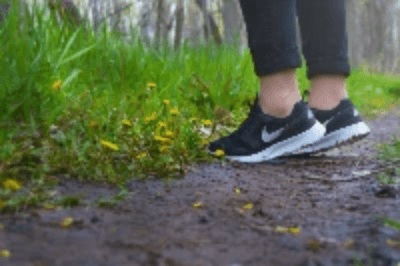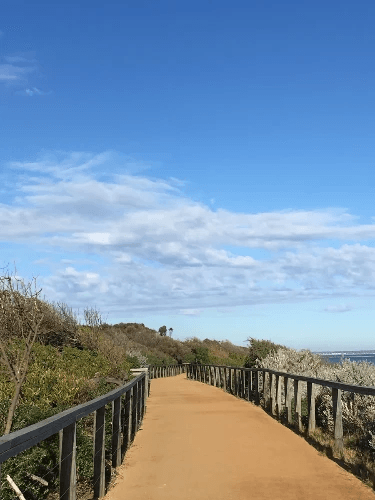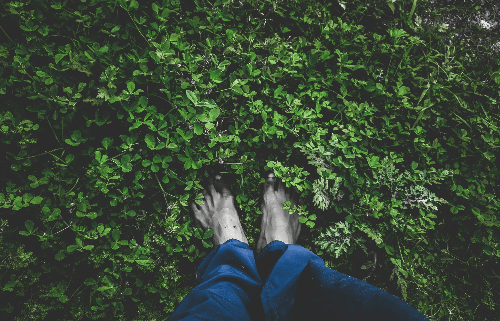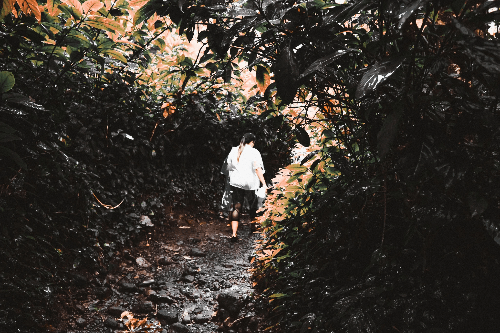"If you seek creative ideas go walking. Angels whisper to a man when he goes for a walk." Raymond I. Myers

I’ve always been a walker, but the habit of a daily walk was cemented during Covid where permission to go outside became, for me, associated with escape.
I wrote ‘The Creative Advantage’ during Covid and in the years leading up to publishing, I was deeply immersed in researching the multiple areas of creativity. One area particularly emerged, that of creating the conditions that contribute to having more and better ideas.
As Covid continued, it became clear that a routine of good habits was going to be essential. Walking became the ‘third space’ where I could transition from a day of writing to the evening’s rituals. The daily afternoon walk was like the full stop. And this habit continues, everyday.

The research phase provided demonstrable evidence that regular physical movement is associated with better brain function, improved memory, reduced health decline, reduced risk of cognitive decline and dementia and in children it increases their learning capacity.1
It makes sense that when we feel good, we get our blood pumping and this helps our brain function better. I was particularly interested in the links to creativity and found this through the work of Dr. Wendy Suzuki, who’s research has shown a direct correlation between exercise and creativity.
This is centred on the functions of prefrontal cortex and hippocampus, involved in future thinking and imagination, critical for the process of creativity. She says as walking can improve our mood and provide a creative burst, then long term exercise will grease the wheels of creativity even further. 2
I find I often use the walks to problem solve, to enable the subconscious to do its work while the movement stimulates my brain. I’m not alone, many famous people throughout history found a profound relationship between walking and thinking and walking and culture.3
Looking back the exploration of the daily walk is serendipitous as its demonstrated the all-round benefits of this daily practice. It’s not about the length covered, or the speed it’s covered in. For me it’s more about the how I feel before, during and after in grounding myself. Sometimes it's relaxing, sometimes physical. Sometimes I listen to podcasts and enjoy the education, sometimes it’s the silence I need. Sometimes it’s a decompression, noticing thoughts are coming in and out and which ones are ruminating and sticking.
Creativity its about permission to be in the flow, and walking enable ideas to pop in. As the year goes on I notice…. the change in seasons, my body, my breathing, the local environment…. Just notice and cultivate the benefits of walking.

Libby DeLana’s excellent book ‘Do/Walk’ points to research on the concept of earthing or grounding. 4
This suggests the connection between humans and the earth's electric charge has been lost in modern life and that barefoot contact has a number of physiological benefits.
Walk Score
We also know that people who walk verses drive, are less overweight. City planners are noticing this too, with tools to help us determine the walkability rating of a place.
A Walk Score is a score out of 100 that measures the walkability of a given address, indicating how easy it is to access daily amenities like grocery stores, restaurants, and parks on foot. The system uses a complex algorithm that considers the proximity to amenities, the density of population, and road and intersection design to assign a score for locations primarily in the US, Canada, and Australia. Higher Walk Scores are associated with more walkable communities and can correlate with higher property values. 5
Health Benefits
We also know that walking in green space is also beneficial for creativity from Professor David Strayer’s work that examines human attention, limits of human multitasking ability and how attentional capacities can be restored by interacting with nature. 6
He reiterates that modern technology has allowed us to connect to the digital world 24/7, spending less time interacting face to face with people or participating in activities in nature.
His hypothesis known Attention Restoration Theory (ART), suggests that exposure to nature can restore the prefrontal cortex to replenish and rest. 7 His studies have shown that exposure to natural environments can decrease stress and improve performance on tasks measuring attention. In addition, exercise can assist with cognitive performance and neurogenesis. But, he says, to get the full benefits of being outdoors you need to unplug and leave the technology behind.
Further research confirming the benefits found results in improved short term and working memory, better problem solving, lower levels of stress, higher feelings of positive wellbeing and, of direct interest, greater creativity. 8
Doctors are prescribing a walk in natural settings to improve health and mental wellbeing with forest or nature bathing, highly recommended based on the work of Japanese environmental health practitioners.

Footnotes and References
1. Williams, F (2017) The Nature Fix: Why nature makes us happier, healthier and more creative. WW Norton and Co, USA, 151
2. Suzuki, W (2016) Healthy Brain, Happy Life: A personal program to activate your brain and do everything better, Dey Street Books, USA, 233, 234-5
3. Rebecca Solnit , Wanderlust: A History of Walking, 2001
4. Libby DeLana, Do Walk, Navigate earth, mind and body. Step by Step. 2021
6. Prof Strayer runs the Applied Cognition Laboratory at the University of Utah. Retrieved from
7. Atchley, R.A, Strayer, D.L, Atchley, P. Creativity in the Wild, 2012. Retrieved from https://journals.plos.org/plosone/article?id=10.1371/journal.pone.0051474
8. David Strayer, TED talk, This is your brain on nature. Retrieved from https://www.youtube.com/watch?v=_vRMRBxvtZA, and Williams , F (2017) The Nature Fix: Why nature makes us happier, healthier and more creative. WW Norton and Co, USA, 179, 183.
Further blog posts on this topic:
How walking in nature changes the brain.
https://www.thecreativecatalyst.com.au/blog/how-walking-in-nature-changes-the-brain
Multiple studies find walking improves creativity
https://www.thecreativecatalyst.com.au/blog/study-finds-walking-improves-creativity
and
and